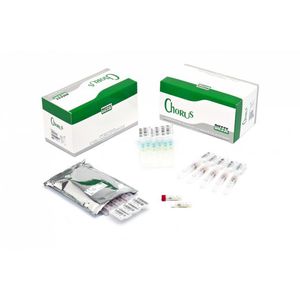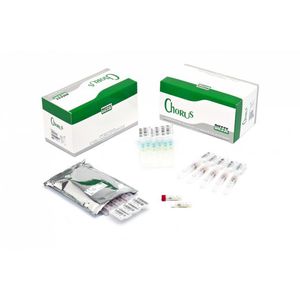
- Laboratory
- Laboratory medicine
- Bone disease test kit
- Diesse Diagnostica Senese

- Products
- Catalogs
- News & Trends
- Exhibitions
Bone disease assay kit Chorus 25OHfor clinical chemistryvitamin Dcalcium
Add to favorites
Compare this product
Characteristics
- Applications
- for bone diseases
- Application field
- for clinical chemistry
- Tested parameter
- vitamin D, calcium, phosphorus
- Sample type
- serum
- Analysis mode
- ELISA
- Result display time
90 min
Description
Vitamin D is a fat-soluble vitamin that is involved in calcium-phosphorus metabolism. It exists in two forms: cholecalciferol (Vitamin D3), and ergocalciferol (Vitamin D2). In the bloodstream D2 and D3 are conjugated to carrier proteins, mainly VDBP (Vitamin D-Binding Protein). Both the forms are biologically inert and suffer, in the body, two important hydroxylations: the first in the liver, with formation of calcidiol (25(OH) Vitamin D); the second in the kidney, with the formation of calcitriol (1.25(OH)2 Vitamin D), the biologically active metabolite.
25(OH) Vitamin D is generally considered the main form of storage and the determination of its serological concentration is considered a reliable indicator of overall Vitamin D status (more than 95% of Vitamin D in the serum is represented by 25(OH)).
Vitamin D is essential for good health of bones. A deficiency of Vitamin D results in a defective mineralization of the bone structure which can lead to childhood rickets, osteoporosis and osteomalacia in adults. An excess of Vitamin D, "Hypervitaminosis D" determines pathological effects on the organism.
Vitamin D has also extra-skeletal functions, including the immune modulating and anti-proliferative, has a possible role in chronic inflammatory and neoplastic diseases, diabetes, cardiovascular and autoimmune diseases and in dermatology, where a deficiency of Vitamin D is associated to psoriasis, vitiligo, atopic dermatitis, melanoma and epithelial tumors of the skin.
Several studies have shown that, in Mediterranean countries such as Italy, despite the latitude, the population is among those with the lowest serum levels of Vitamin D in Europe.
Catalogs
Chorus Reagent
2 Pages
Exhibitions
Meet this supplier at the following exhibition(s):

Related Searches
- Assay kit
- Blood assay kit
- Serum assay kit
- Immunoassay assay kit
- Plasma assay kit
- Infectious disease detection kit
- Blood rapid diagnostic test
- Rapid lateral flow test
- Immunoassay rapid diagnostic test
- Cassette rapid diagnostic test
- Virus rapid diagnostic test
- Respiratory infection test kit
- Clinical assay kit
- Whole blood rapid diagnostic test
- ELISA assay kit
- Rapid respiratory infection test
- IgG test kit
- COVID-19 rapid diagnostic test
- Feces test kit
- Influenza A assay kit
*Prices are pre-tax. They exclude delivery charges and customs duties and do not include additional charges for installation or activation options. Prices are indicative only and may vary by country, with changes to the cost of raw materials and exchange rates.


















